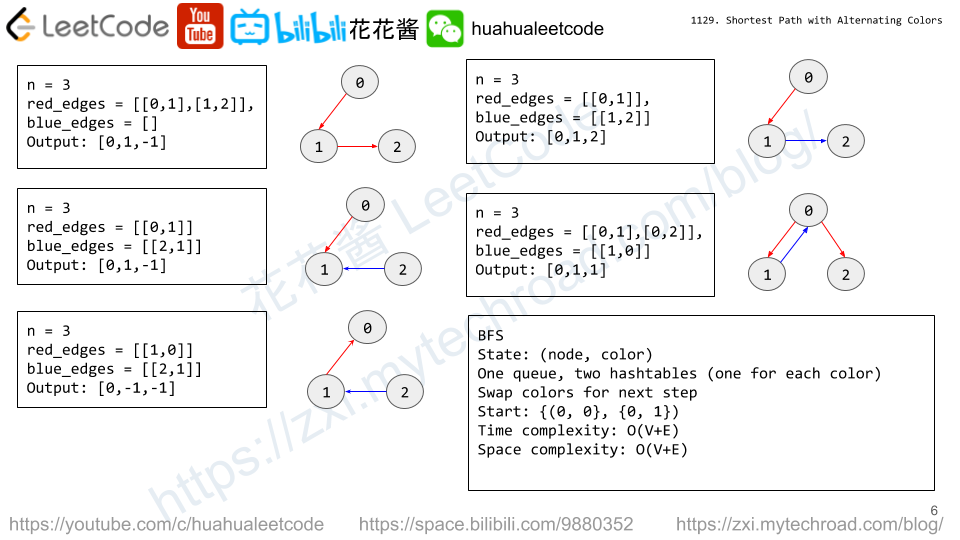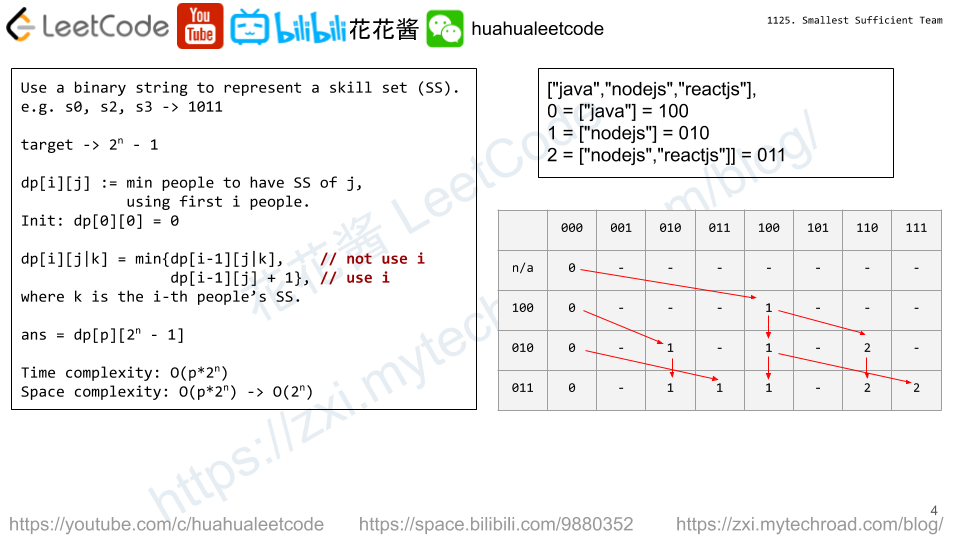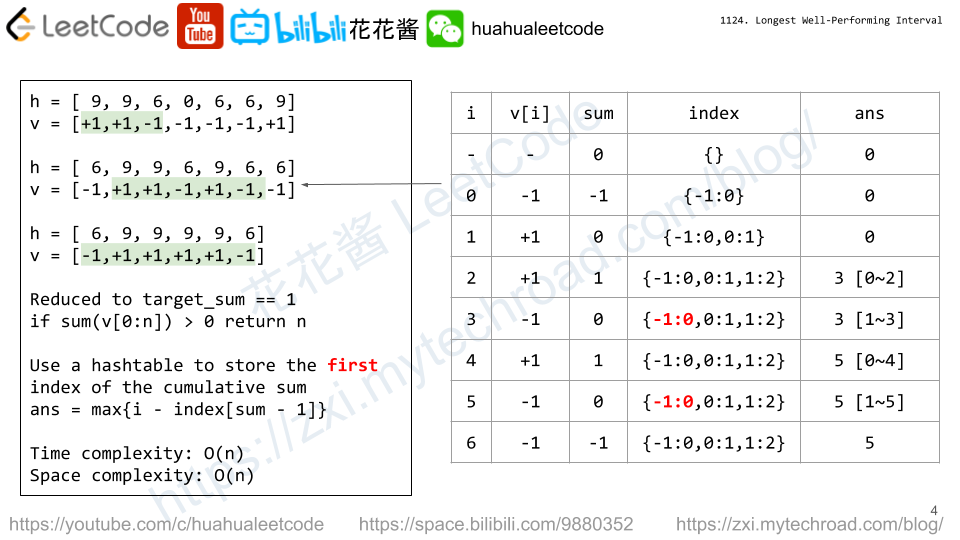Consider a directed graph, with nodes labelled 0, 1, ..., n-1. In this graph, each edge is either red or blue, and there could be self-edges or parallel edges.
Each [i, j] in red_edges denotes a red directed edge from node i to node j. Similarly, each [i, j] in blue_edges denotes a blue directed edge from node i to node j.
Return an array answer of length n, where each answer[X] is the length of the shortest path from node 0 to node X such that the edge colors alternate along the path (or -1 if such a path doesn’t exist).
Example 1:
Input: n = 3, red_edges = [[0,1],[1,2]], blue_edges = [] Output: [0,1,-1]
Example 2:
Input: n = 3, red_edges = [[0,1]], blue_edges = [[2,1]] Output: [0,1,-1]
Example 3:
Input: n = 3, red_edges = [[1,0]], blue_edges = [[2,1]] Output: [0,-1,-1]
Example 4:
Input: n = 3, red_edges = [[0,1]], blue_edges = [[1,2]] Output: [0,1,2]
Example 5:
Input: n = 3, red_edges = [[0,1],[0,2]], blue_edges = [[1,0]] Output: [0,1,1]
Constraints:
1 <= n <= 100red_edges.length <= 400blue_edges.length <= 400red_edges[i].length == blue_edges[i].length == 20 <= red_edges[i][j], blue_edges[i][j] < n
Solution: BFS
Time complexity: O(|V| + |E|)
Space complexity: O(|V| + |E|)

C++
|
1 2 3 4 5 6 7 8 9 10 11 12 13 14 15 16 17 18 19 20 21 22 23 24 25 26 27 28 29 30 31 32 33 34 35 36 37 38 |
class Solution { public: vector<int> shortestAlternatingPaths(int n, vector<vector<int>>& red_edges, vector<vector<int>>& blue_edges) { vector<unordered_set<int>> edges_r(n); vector<unordered_set<int>> edges_b(n); for (const auto& e : red_edges) edges_r[e[0]].insert(e[1]); for (const auto& e : blue_edges) edges_b[e[0]].insert(e[1]); unordered_set<int> seen_r; unordered_set<int> seen_b; vector<int> ans(n, -1); queue<pair<int, int>> q; // (node, color) q.push({0, 0}); // red q.push({0, 1}); // blue seen_r.insert(0); seen_b.insert(0); int steps = 0; while (!q.empty()) { int size = q.size(); while (size--) { int p = q.front().first; int is_red = q.front().second; q.pop(); ans[p] = ans[p] >= 0 ? min(ans[p], steps) : steps; const auto& edges = is_red ? edges_r : edges_b; auto& seen = is_red ? seen_r : seen_b; for (int nxt : edges[p]) { if (seen.count(nxt)) continue; seen.insert(nxt); q.push({nxt, 1 - is_red}); } } ++steps; } return ans; } }; |

